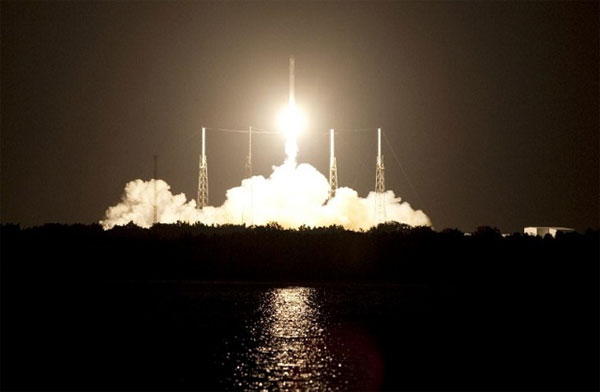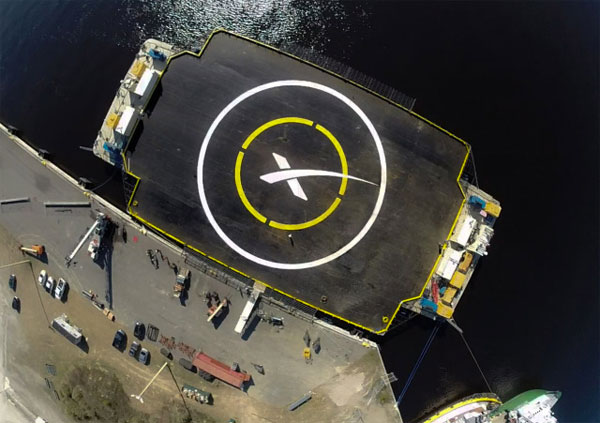SpaceX is ambitious to reuse spacecraft launch missiles
A mission to supply essentials to the international space station ISS will also completely change the future of the space exploration industry and help reduce tens of millions of dollars each year for human space travel.
In the upcoming 6/1 day, SpaceX, the company founded by billionaire Elon Musk (PayPal, Tesla .) will perform an extremely daring test: CRS-5 spacecraft contains food, items The experiment and 2 micro-cubesat satellites will use 1 rocket to allow reuse. After successfully launching this spacecraft, SpaceX will control the aforementioned rocket to a floating platform similar to a sea oil filter.

SpaceX's Falcon 9 rocket
Normally, the spacecraft's multi-stage boosters will be destroyed and fall directly into the sea. SpaceX performed a seemingly impossible task to reuse the 1st-floor rocket (the bottom floor and also the largest floor): the first-floor missile is usually as tall as a 14-story building and has a return speed About Earth is 1,300m / s.
However, if successful, SpaceX will help reduce thousands of dollars in costs for each missile launch. This achievement will help revolutionize the journey into human space.
A mission to supply essentials to the international space station ISS will also completely change the future of space exploration.
SpaceX's goal is to bring its rocket-propelled rocket to a hovering state above the landing zone in the hope that the landing process will not cause the rocket to be completely damaged. Through the testing process, SpaceX also made a number of design changes, such as adding steering wheels to the rocket's X-shaped wing set to avoid rotation when landing. In previous tests, Elon Musk's company had successfully launched sea-based missiles, but this would be the first time the landing system was used to collect rockets for recycling.

The radius of the rocket's landing is only 10 meters
Earlier, in March, Elon Musk said it would land a missile landing in Cape Canaveral area at the end of the year. By December, a failed rocket engine test had forced SpaceX to push back the official test date by early January. Spaceship supplies of Orbit Science's supplies of supplies failed in October. Also, SpaceX had to push back the day of launching CRS-5 to equip more goods to ISS.
In October, Musk also announced in an organizational conference at MIT that SpaceX's probability of landing successfully in about 10 previous tests was 50%.
- SpaceX successfully launched Dragon 2 ship
- How does the missile reuse affect the aviation industry and the universe?
- Elon Musk 'reuse' boosters explode when landing
- SpaceX will launch more missiles than any country this year
- SpaceX is about to launch 5 missiles in a month
- SpaceX launched the third satellite in just ... 2 weeks
- SpaceX is about to launch missiles carrying over 6 tons of satellites
- SpaceX successfully landed missiles in California
- SpaceX successfully launched Falcon 9 missiles
- 12 things you may not know about SpaceX's Falcon Heavy missile
- SpaceX rocket suddenly exploded just before the launch time
- The numbers said after the successful launch of the Falcon Heavy missile
 Van Allen's belt and evidence that the Apollo 11 mission to the Moon was myth
Van Allen's belt and evidence that the Apollo 11 mission to the Moon was myth The levels of civilization in the universe (Kardashev scale)
The levels of civilization in the universe (Kardashev scale) Today Mars, the sun and the Earth are aligned
Today Mars, the sun and the Earth are aligned The Amazon owner announced a secret plan to build a space base for thousands of people
The Amazon owner announced a secret plan to build a space base for thousands of people